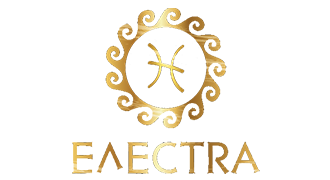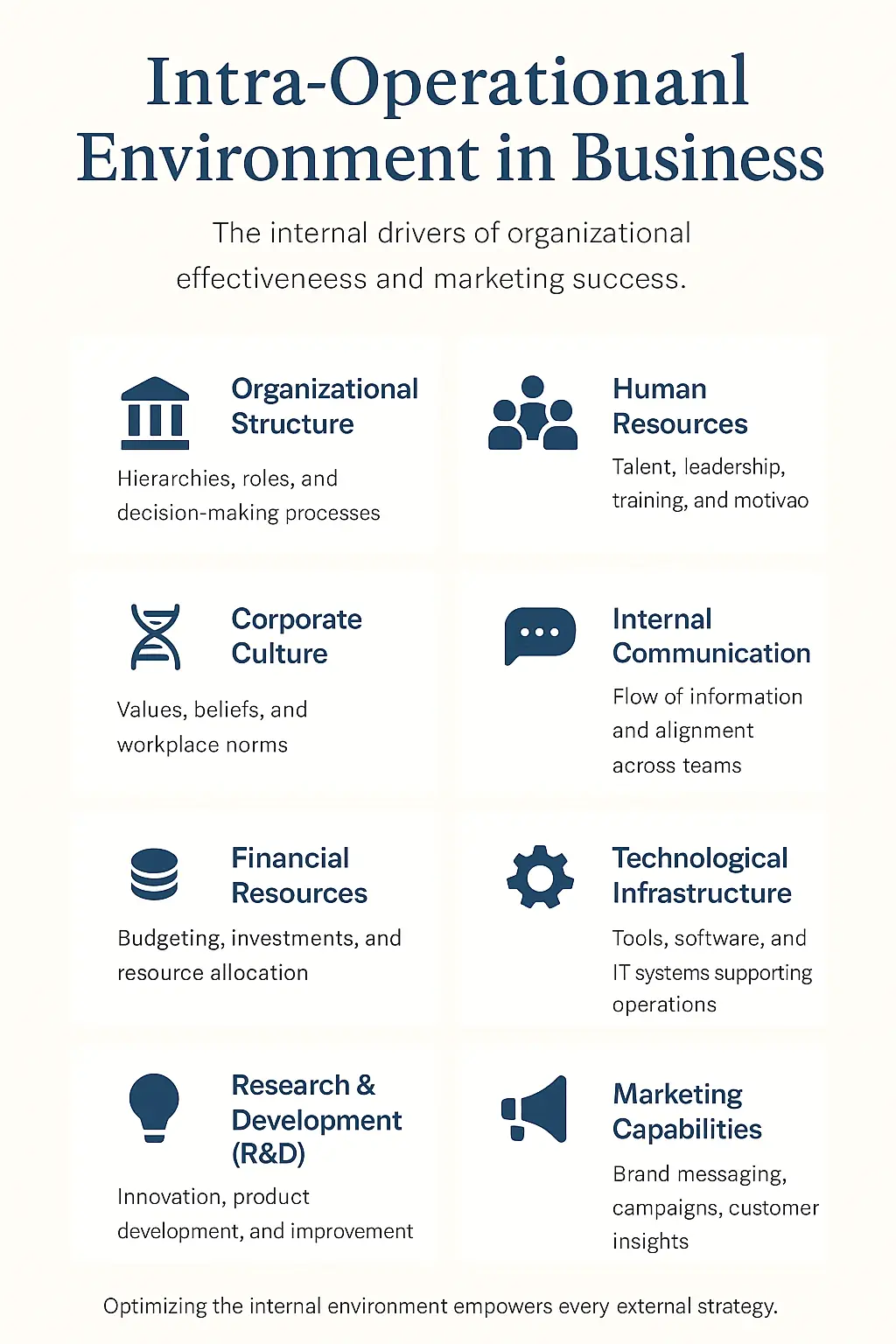🏢 The Intra-Operational Environment: Internal Variables That Shape Business Performance
Abstract
The intra-operational environment comprises all internal factors within a business’s direct control. These include the organization’s structure, culture, resources, processes, and personnel. A deep understanding of these internal variables is crucial for effective strategic planning, operational efficiency, and successful marketing. This article explores the key components of the intra-operational environment, their interrelations, and how they influence organizational adaptability and competitive advantage.
1. Introduction
While businesses must remain vigilant of external changes, internal conditions — or the intra-operational environment — form the foundation for delivering value, executing strategies, and achieving long-term success.
Unlike the extra-operational environment (external and uncontrollable), the intra-operational environment is completely within management’s control, making it a focal point for continuous improvement.
2. Definition of Intra-Operational Environment
The intra-operational environment consists of all internal elements and systems that influence a company’s:
- Productivity
- Efficiency
- Culture
- Customer service
- Marketing effectiveness
- Innovation capability
3. Key Variables in the Intra-Operational Environment
1. Organizational Structure
- Description: How responsibilities, authority, and communication are distributed.
- Types: Functional, matrix, flat, hierarchical.
- Impact: Influences decision-making speed and departmental collaboration.
- Example: A flat structure may promote innovation, while a hierarchical one may ensure process control.
2. Human Resources (Employees & Leadership)
- Description: The quality, skills, and motivation of personnel.
- Key Factors:
- Recruitment and retention
- Training and development
- Leadership style and competence
- Internal communication
- Impact: Directly affects productivity, innovation, morale, and service quality.
3. Corporate Culture
- Description: Shared values, beliefs, and behaviors within the organization.
- Impact:
- Drives employee engagement and ethical behavior.
- Influences brand image and customer interaction.
- Shapes internal collaboration and resistance to change.
4. Internal Communication Systems
- Description: How information flows across departments and teams.
- Examples:
- CRM systems
- Intranet platforms
- Slack or internal newsletters
- Impact:
- Ensures strategic alignment and operational coherence.
- Reduces misunderstandings and increases productivity.
5. Financial Resources
- Description: Capital available for operations, marketing, R&D, and expansion.
- Impact:
- Determines scale and scope of campaigns.
- Affects investment in technology, hiring, and partnerships.
6. Technological Infrastructure
- Description: Hardware, software, networks, and IT capabilities used in daily operations.
- Impact:
- Enables automation and data analysis.
- Supports e-commerce, CRM, and digital marketing platforms.
7. Research and Development (R&D)
- Description: The ability to innovate and improve products, services, and processes.
- Impact:
- Drives competitive advantage through differentiation.
- Enhances responsiveness to market needs.
8. Marketing Capabilities
- Description: Internal capacity to plan, execute, and measure marketing efforts.
- Includes:
- Marketing team skills
- Content creation capabilities
- Branding consistency
- Analytics tools and CRM systems
4. Strategic Importance of the Intra-Operational Environment
| Area | Strategic Value |
|---|---|
| Structure | Enhances agility and accountability |
| People | Drives performance and innovation |
| Culture | Builds unity, motivation, and brand authenticity |
| Resources | Supports scalability and responsiveness |
| Communication | Aligns teams and strengthens decision-making |
| Technology | Enables efficiency and data-driven decisions |
| R&D and Marketing | Fuels innovation and customer engagement |
5. Intra-Operational and Marketing Synergy
The intra-operational environment directly shapes how well marketing strategies are executed, particularly in:
- Customer Experience (CX): Customer support, delivery speed, and service quality rely on internal processes.
- Brand Identity: Consistency depends on internal brand understanding and cross-department collaboration.
- Campaign Execution: Requires alignment between marketing, finance, product, and tech teams.
- Data and Analytics: Marketing insights are only possible with strong data systems and internal analysis capabilities.
6. Improving the Intra-Operational Environment
| Initiative | Benefit |
|---|---|
| Staff Training & Development | Enhances productivity and innovation |
| Organizational Restructuring | Improves agility and clarity of roles |
| Technology Upgrades | Increases speed and analytical accuracy |
| Internal Brand Workshops | Ensures alignment and engagement |
| Cross-Functional Collaboration | Reduces silos and improves strategic execution |
| Employee Engagement Programs | Increases retention and morale |
7. Conclusion
The intra-operational environment forms the engine room of the organization. Its variables — from people and processes to culture and infrastructure — determine how effectively a company can respond to challenges, meet customer expectations, and grow sustainably.
For businesses aiming to thrive, optimizing internal systems and resources is as crucial as monitoring the external environment. By continuously refining intra-operational conditions, firms empower their marketing strategies, enhance customer experiences, and drive long-term value.

